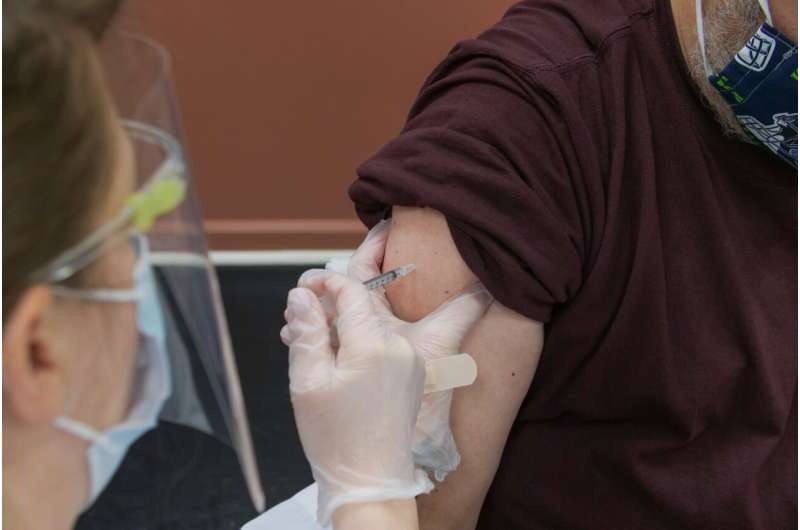The mechanics of puncture finally explained

The feeling of a needle piercing skin is familiar to most people, especially recently as COVID-19 vaccinations gain momentum. But what exactly happens when a needle punctures skin? The answer is revealed in a new paper published recently in the Journal of the Mechanics and Physics of Solids.
Mattia Bacca, assistant professor at the University of British Columbia, often looks to the natural world for answers when he's faced with a mechanical engineering problem—like the way a gecko can cling to a surface with the pads on its toes, or an ant can cut through a leaf many times its size.
Bioinspired engineering helped Dr. Bacca, along with Ph.D. candidate Stefano Fregonese, to answer the previously unsolved question of how the mechanics of piercing works on soft materials, like skin.
"Cutting is ubiquitous in our survival and daily lives," Bacca explains. "When we chew food, we cut tissue to make it digestible. Almost every species in the animal kingdom evolved with the ability to cut tissue to feed and defend, hence have acquired remarkable morphological and physical features to allow this process efficiently."
They created a mechanical theory to determine the critical force required for needle insertion—the pivotal phenomenon of puncture. Their work provides a simple, semi-analytical model to describe the process, from dimensional arguments to finite element analysis.
Mechanisms involved in cutting soft tissue have only gained attention in engineering over the last several decades, initially with investigations into the properties of rubber. Previous approaches determined the force needed to insert a needle in tissue after its initial puncture, using physical experiments that couldn't fully measure the deformations and complex failure mechanisms involved in breaking through the surface of a soft material.
In contrast, the new model created by Fregonese and Bacca can finally predict the puncture force and validate this with previous experiments. They discovered that the needle insertion force is proportional to the toughness of tissue and scales inversely with the radius of the needle—meaning thinner needles require less force. Albeit both these observations are intuitive, they provided quantitative prediction. What is counterintuitive, however, is the role of material rigidity in this process. Tissue rigidity scales inversely with puncture force, with softer tissue requiring higher force (at same toughness). The UBC team is currently performing additional experiments and model refinements to get "deeper" into the physics of this problem.
So far, their results come from various inquiries into animal solutions. At first, Fregonese joined Dr. Bacca's Micro & Nano Mechanics Lab for a project related to the mechanics of adhesion in animals like geckos. Exploring overlaps with this area and the problem of cutting, they began to investigate fundamentals of cutting and the link to the morphological evolution of animals, with an international collaboration >studying leafcutter ants with animal biomechanics expert Dr. David Labonte (Imperial College), and muscle physiology expert Dr. Natalie Holt (University of California). They also collaborated with UBC Okanagan's Dr. Kevin Golovin and mechanical engineering colleague Dr. Gwynn Elfring to research the interaction between ballistics and gels.
Their new theoretical model may help engineers developing various applications such as protective equipment, automation processes involving food and the emerging technology of robotic surgery.
It may also impact how people experience injections in the future, something top of mind for people who've recently lined up to receive their COVID-19 vaccination. For example, future technology could provide options like self-administered disposable pads armed with microneedles—like the ones designed by UBC's Dr. Boris Stoeber—designed to pierce skin at the right depth and with the right force.
More information: Stefano Fregonese et al, Piercing soft solids: A mechanical theory for needle insertion, Journal of the Mechanics and Physics of Solids (2021). DOI: 10.1016/j.jmps.2021.104497
Provided by University of British Columbia




















